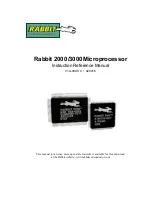
Access Power Solutions Installation Guide (APS6-400 Series)
90
Copyright © 2009-2010 Eaton Corporation. All Rights Reserved.
IPN 997-00012-53B December 2010
System Alarms
Equipment Required:
dc load bank
dc power supply
Test
Test procedure
Adjustment
General notes about
alarm testing
For all alarms check the following where applicable:
SC200 or SC100 LED status.
SC200 or SC100 display indication.
DCTools/Web alarm indication
Remote alarm indication (PowerManagerII, SNMP
traps, and so on)
Digital outputs (relays).
Reducing the alarm recognition time will reduce the alarm
testing time.
There may be more than 1 method to perform the
following alarm tests.
Low Float
Note 1
Increase the
Low Float Threshold
to just below the float
voltage.
Reduce the system voltage by heating the battery
temperature sensor
- or -
Disconnect the battery from the system.
Start a
Battery Test
.
The system voltage will fall.
Ensure alarm operates.
Low Load
Test as for the
Low Float
test.
Note that the
Low Load Threshold
is lower than the
Low Float
threshold.
Ensure alarm operates.
High Float
Note 1
Set the system
Float Voltage
above the
High Float Threshold.
- or -
Reduce the
High Float Threshold
and increase the system
voltage by starting an
Equalize
.
- or -
Reduce the
High Float Threshold
and increase the system
voltage by cooling the battery temperature sensor.
Ensure alarm operates.
High Load
Increase the system voltage.
Test as for the High Float test.
Note the High Load Threshold is higher than the
High Float Threshold
Ensure alarm operates.
Rectifier Fail
Turn off a rectifier ac circuit breaker (if fitted).
The rectifier will turn off.
Ensure alarm operates.
Multiple rectifier fail
Turn off the ac circuit breakers to 2 rectifiers (if fitted).
The rectifiers will turn off.
Ensure alarm operates.
Rectifier comms lost
Remove a rectifier from the system.
















































